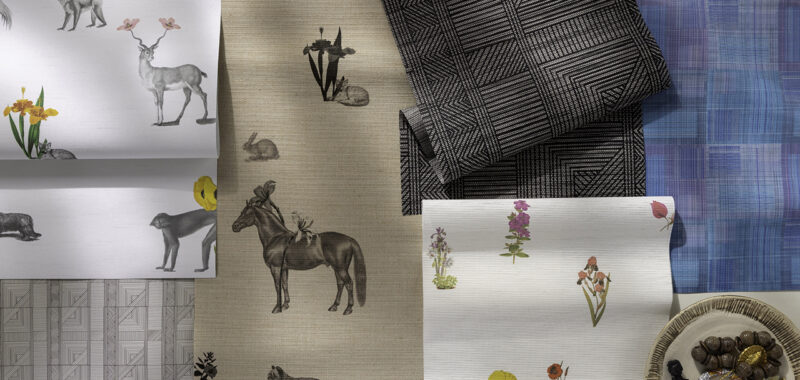Mimi Plange, Ghanaian-American designer, and The Shade Store, window treatment powerhouse, present a unique collection of roller shades and sun shades. This is the first collaboration of its kind, marking a new era for The Shade Store. Plange is no stranger to collaborations, having worked with iconic brands such as Manolo Blahnik, Roche Babois, and Nike Basketball, to name just a few. The Mimi Plange Collection for The Shade Store features four stunning prints – Geometric Grassweave, Kente Plaid, Victoria, and Botanica Grassweave – each in five distinct colorways. At long last, window treatments can have some fun as well.
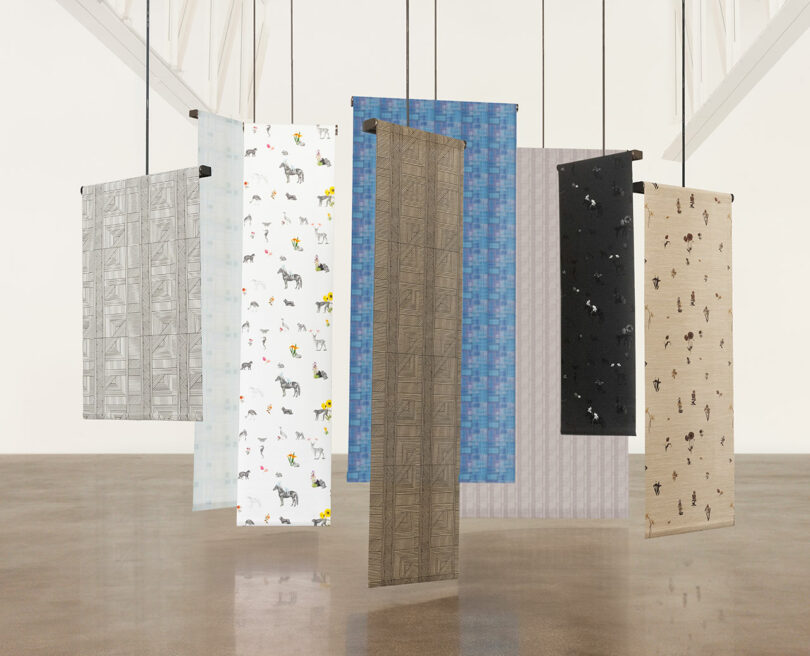
Plange dives deep to her roots within her designs. She blends the rich cultural history of her Ghanaian heritage with American sportswear to create contemporary, modern works with obvious historical ties. Her work embodies ‘Unfashion,’ a concept to describe her ethos. It’s for the untraditional, unconventional, and unpopular, encouraging us to challenge the norm. In fact, she hosts a blog dedicated to the pioneers, the rebels that embody this cause.
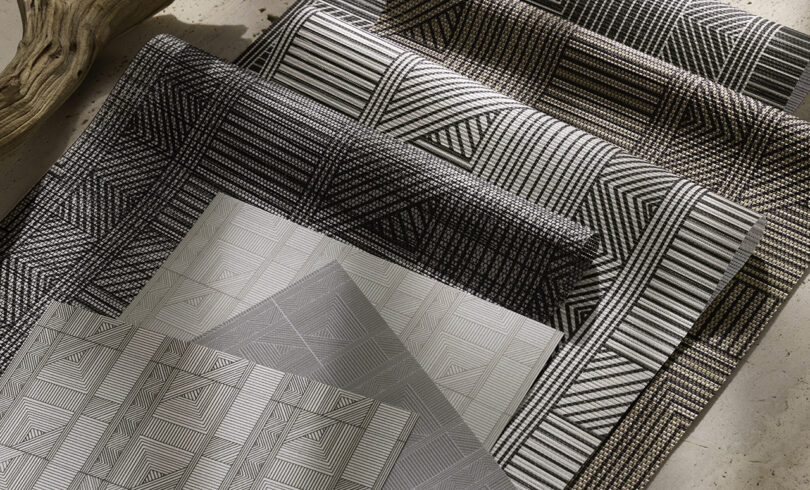
Geometric Grassweave

Kente Plaid
In the drapery industry, there seems to be a shockingly similar amount of options to choose from. Tan, cream, maybe a stripe if your client’s feeling wild. These are a beautiful step outside the box, four cascading prints with ample amounts of texture. Specifically designed to work with multiple different textures, the colorways speak to the contemporary nature of the designs. In an exclusive interview with Design Milk, she talks in depth about her inspiration behind this collection.

Victoria
What attracted you to collaborate with The Shade Store for your first venture into custom window treatments?
I have to say, it all came together organically. I met Adam, who had been the previous CEO, and his brother, Zach, and we were talking about it – it was an area that I hadn’t really thought of and then all of a sudden, I became obsessed with it. I wanted to know everything, and it seemed like a wonderful challenge that I wanted to step into. Over time, I was getting more entwined into interiors and how important our houses are, the energy that lies there. It wasn’t something that we had to try too hard to get into, it just worked.
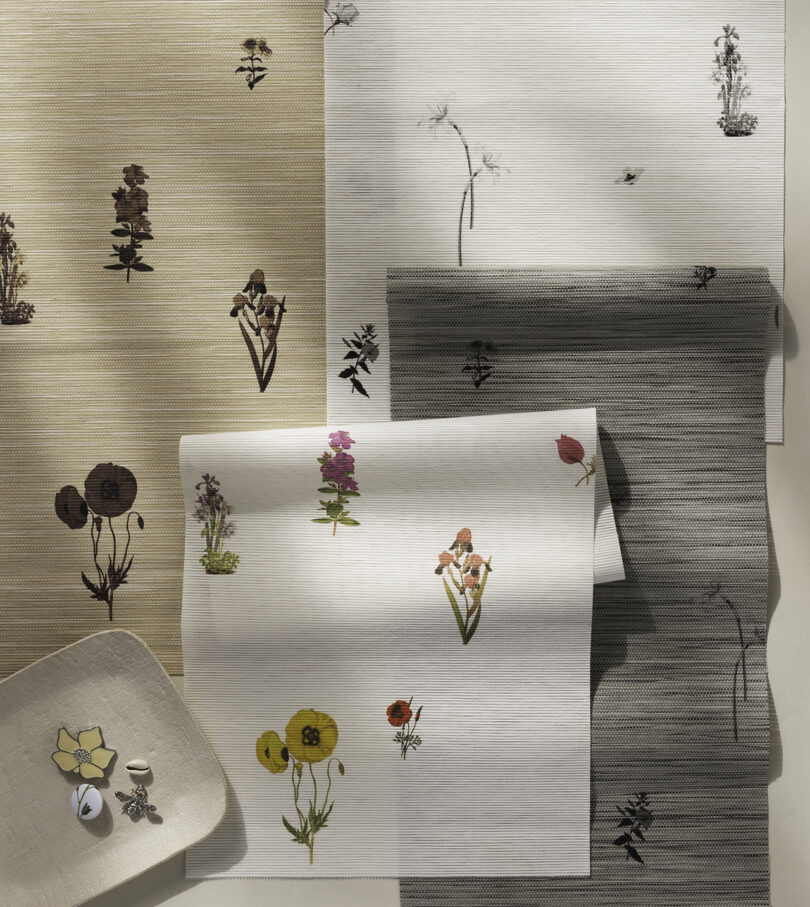
Botanica Grassweave
How did your background in fashion influence the design process and finished products for the new collection?
I definitely wanted to bring who I am into the mix of designing. When you’re a fashion designer, you have to think about your consumer at the end of the day. Somebody must want to put the clothes on, they have to want to wear them, and it has to be real for them. I want to make sure that we maintain this level of unfashionable and what it means to be striking and bold, but also that this is something that’s going to live in someone’s home for a long period of time. It has to be timeless, and something that we can come back to every single day. The grounding of the work, and thinking about the end user, is what gave me a foundation to create something that had that balance.

Your collection blends ancient African traditions with modern aesthetics. How did you approach balancing these two influences in your designs?
When I was growing up, I would see things that were African, and it would always be bold colors and Maasai influences. It was always centered on maybe two ideas, and everything would look like that. My mom modeled when she was younger, and my vision of Africa was completely different from the one I was seeing. She was amazing, so I just wanted to tell those stories, things that I hadn’t seen before. My mom had a scar on her cheek, and I used to wonder where it came from. Some of my family members had those scars too, so I asked about them and I learned about scarification. What would those stories look like if they evolved over time? That’s always really been the approach, to make something that’s modern and of today. To bring to the forefront how the design details of symmetry and repetition are rooted in African design. If you saw the item by itself, it still stands alone, it’s not necessarily that it’s African. It’s geometric, it’s all these other things, and that’s what I like to do with my work. I don’t like people to know exactly what it is when they look at it. It’s about making sure that it’s relevant, and that people are going to respond to it regardless.
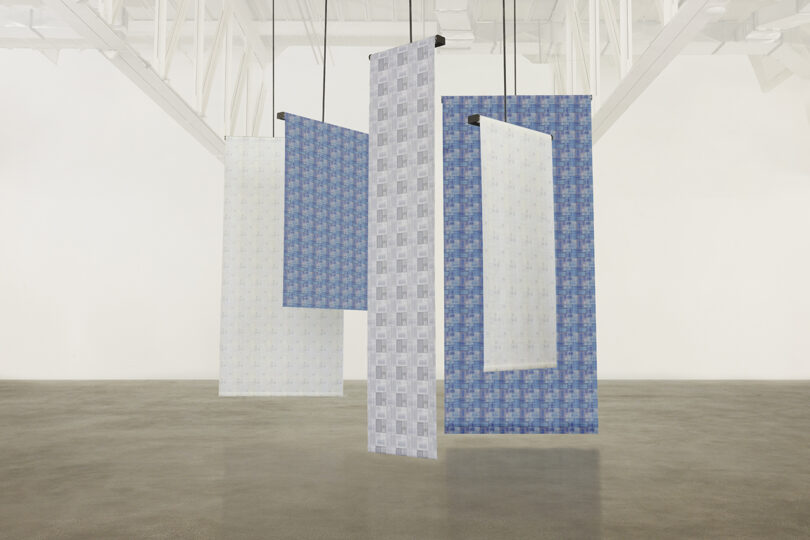
Kente Plaid

Kente Plaid in Dove
Can you share about the creative process behind the use of Kente Plaid and how it evolved into an abstract plaid design?
I needed to touch upon Kente because I’m from Ghana, and I wanted to make sure that I did a print that was kind of abstract. This time I wanted to create a print that looked like a weave – the Kente tradition of the loom, it’s just horizontal and vertical. I was thinking of how I could create something that looked like a fabric, but done with all single needle stitches, just lines across to create some texture. That was really important to me about the whole project, and the thinking behind getting some of that history in there. I love the undulation of colors, it speaks to the hand woven quality that a lot of Kente fabrics have. With the Kente Plaid, the colors are very neutral. The blue is very specific, different views of indigo and that actually was a contrast of Mali printing techniques. Their indigo colors, the depth they have, and how natural their process is, the color scheme was a nod to the people of Mali.

Botanica Grassweave

Botanica Grassweave in Camel
The Shade Store implemented new printing techniques for this collection. What challenges did you face while adapting your designs to these materials?
We got a chance to go down to their factory and really see how everything was made. We saw people working on things by hand, constructing all these different elements and so before we even began, we got a good lesson on the creation of all these products. I knew from the very beginning that I wanted to do something that had a lot of texture, and the print was always going to complement the texture. We said, “let’s just try it,” and The Shade Store was totally open. I wouldn’t really call it a challenge, it was just really fun to be able to try different things that they hadn’t done before. They were very open to the process, it was more so being able to go there and see how it all comes together. I feel like almost everything that I do is going to look good on some kind of texture because when we make our clothes, a lot of what we’re doing is creating surface texture. We’ve specialized in embroideries, Trapunto, all those hand-made details of raising the fabric. I found the medium to be complimentary to our prints.
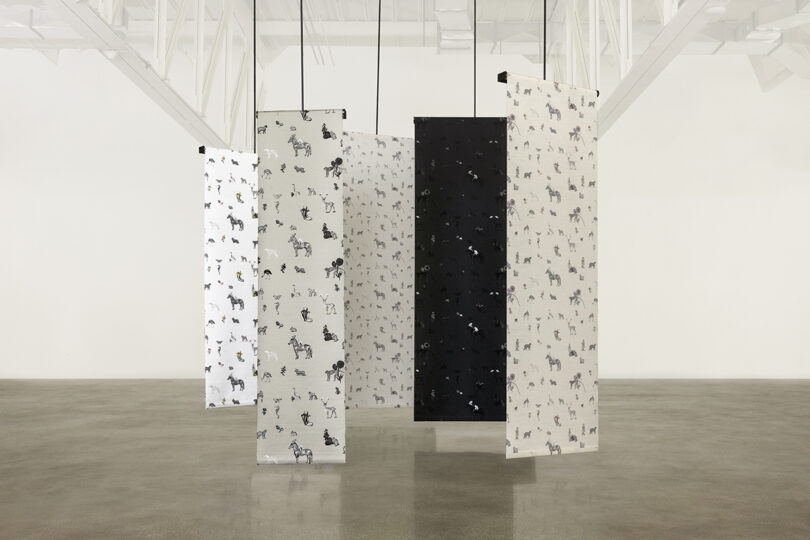
Victoria
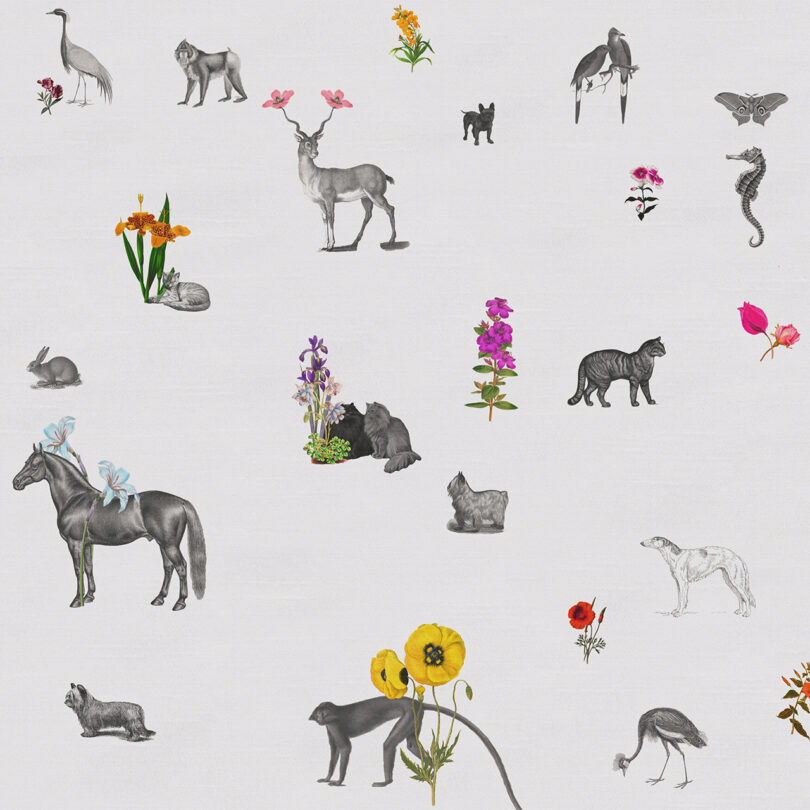
Victoria in Blackout Chalk
Your designs are known for storytelling. How do the specific prints in this collection, like Victoria and Geometric Grassweave, tell stories beyond their visual appeal?
When I was like little, I had this obsession with movies and the Victorian era. Loving Edwardian clothes is what got me into fashion to begin with. I first took my first trip to Ghana, my aunt is a tailor there. She would take me around, and a lot of the women wear this style of dress called Kaba and Slit. I never thought anything of it, but then when I started doing my research, that style of dress was passed to them during the Victorian era. There’s another tribe, the Herero women that live in Namibia, and they also wear like a German style dress with a lot of floral prints and big petticoats underneath, in the hot sun! Since that time they’ve never changed their style, and this is all influenced from that time. I wanted to create a print that I felt like I could see in an old world home that was from a Victorian movie. These botanical hand drawn illustrations, zoology inspirations, all came from there. I don’t think a lot of people even know the influence that Western dress had on traditional clothing of today. I’ve always done these kinds of prints, like from our 2012 collection where we did a lot of florals, based on the Herero women and how they dress.

Geometric Grassweave
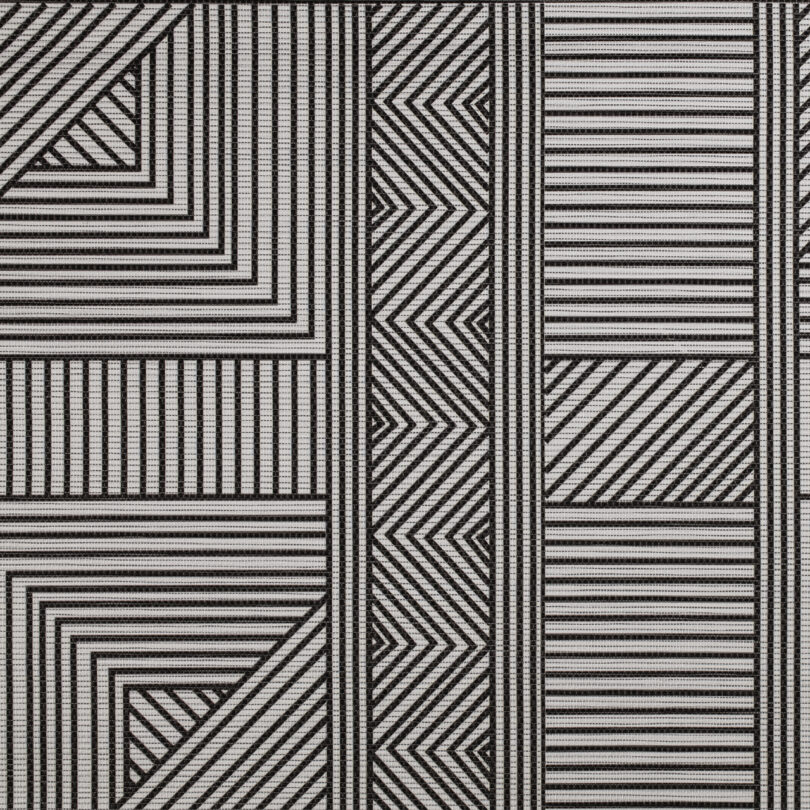
Geometric Grassweave in Slate
Next, we get into the Geometric Grassweave – that’s what we’re known for, the scarification work which we do on leather. That’s the work that has been in museums, and the work that kind of has lifted our brand. For us, it was about doing something very linear using the same structure, making sure that it was a pattern with a balanced symmetry. I looked at the Kente fabric and the patterns of it, mimicking like the scarification details. The Shade Store were great partners, because they were great listeners. I was listening as well, and it felt very natural the entire way through. We love collaborating, so I’m glad that this just gave us another opportunity to open up our minds in a new way.

Mimi Plange
Mimi Plange is a multidisciplinary designer, frequent collaborations dotting her portfolio. With a strong grasp on color and pattern, she leads by making ‘unfashionable’ what’s in. Challenging our preconceived notions of what dress should be, she takes on yet another medium with this new collaboration, dazzling on the built environment as well as on the human form.
For more information on the Mimi Plange Collection for Roller Shades and Sun Shades, click here, and for more on The Shade Store, please visit their website. For updates on Mimi Plange’s work, visit her website or Instagram.

